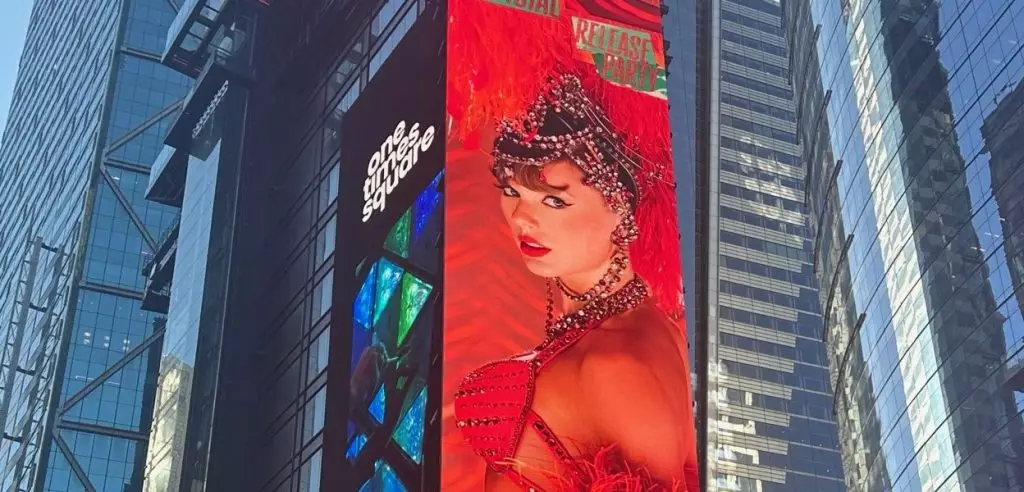In an era where blockbuster films often struggle to meet expectations, Taylor Swift’s surprise screening of “Showgirl: The Official Release Party of a Showgirl” has not only shattered assumptions but is also rewriting the rules of how artists can control their cinematic destiny. This unexpected move, executed with precision timing and strategic control, signals a shift that could redefine the entertainment industry’s approach to artist-led film releases.
The decision to shoot a limited weekend run—just from October 3 to October 5—was a gamble, yet it proved to be a masterstroke. Within 24 hours of tickets going live, the film amassed an astonishing $15 million across all circuits, indicating an almost unprecedented level of consumer demand for a short-term, niche event. This surge contributed to AMC experiencing its sixth-highest day of presales, with about $7.5 million alone. Such figures underscore the power of Swift’s immense fanbase and their willingness to mobilize swiftly for exclusive content, especially when it’s tailored to her artistic vision.
The core strength of “Showgirl” lies in its strategic positioning—not as merely a concert movie, but as a carefully curated promotional tool to drive her latest album, her 12th studio work. Unlike her previous global blockbuster, the Eras Tour film, which grossed over $180 million domestically, “Showgirl” is crafted with a different objective: direct album promotion and fan engagement, rather than record-breaking box office returns. The purpose-built, short window approach minimizes promotional costs, allowing Swift to retain greater control over the narrative and revenue streams.
What sets this release apart is its unique distribution model. Instead of relying on major studios or traditional pre-release marketing, Swift and her team negotiated directly with AMC’s top executives. This bypassing of major Hollywood distributors reflects a broader industry trend—artists gaining autonomy and negotiating deals that maximize profit and control. By doing so, they sidestep the typical Hollywood gatekeeping process, enabling a more authentic, fan-centered release that’s closely aligned with her brand.
Reimagining the Box Office Landscape and Fan Experience
The move to restrict “Showgirl” entirely to a single weekend not only generates a sense of exclusivity but also reinforces a sense of urgency among fans. The reduced ticket prices—around $12 plus tax—lower the barrier of entry, making it accessible to a broader audience while still creating a buzz of excitement. Unlike the Eras Tour film, which had a wide promotional campaign and traditional trailer releases, “Showgirl” opts for mystery and anticipation, with no trailers ahead of time, heightening fan curiosity and engagement.
This strategy reveals Swift’s confidence in her brand power and her understanding of modern consumer behavior. Limited-time only releases cultivate scarcity and exclusivity, turning the event into a cultural moment rather than just another film opening. It also allows her to control the narrative, focusing media attention and social media buzz around the release rather than diluting it over an extended promotional period.
Industry insiders recognize that this approach could influence future artist-led projects. When a musician with Swift’s influence can generate $15 million in a day with a confined release, it signals a potential paradigm shift towards more direct-to-fan distribution models. The success of such a model could encourage other artists to pursue similar paths, reducing reliance on traditional Hollywood platforms that often dilute revenue and branding control.
Furthermore, the film’s content—featuring exclusive performances, behind-the-scenes footage, and personal reflections—aligns perfectly with modern fans’ expectations for authentic, immersive experiences. With an 89-minute runtime and carefully curated content, “Showgirl” serves as a concentrated dose of Swiftian artistry, strengthening her image as a creative powerhouse and narrative innovator. It’s not just about selling an album but about deepening the emotional connection with her audience.
Industry Implications and Future Outlook
The timing of this release amid a packed October slate of films indicates a burgeoning recognition of the value in artist-driven, limited engagement projects. While movies like “The Smashing Machine,” “Avatar: The Way of Water” re-release, and “Bone Lake” are aiming for traditional box office success, “Showgirl” exemplifies a different strategy—short, intense bursts of consumer engagement that prioritize personal connection over pure volume.
This approach could potentially reshape how studios and artists collaborate, emphasizing flexibility, direct fan interaction, and exclusive content. It also hints at a possible decline in the dominance of major studio releases, as artists harness their fanbases to generate revenue outside traditional theatrical windows.
Considering Swift’s history of reinvention and her mastery of social media, the “Showgirl” release demonstrates an evolution in her business acumen. By taking control of her distribution, she minimizes overhead, maximizes profit margins, and creates a flexible blueprint that other artists might eagerly emulate. This is especially relevant in a digital age where consumer attention is fragmented, and exclusivity often trumps broad-market appeal.
Taylor Swift’s “Showgirl” isn’t just a movie; it’s a statement—an audacious move that underscores her influence, songwriting prowess, and business savvy. It challenges industry norms, showcases the power of an engaged fanbase, and signals a new direction for artist-driven projects. If this model proves successful, expect to see more artists seeking control, generating buzz through boutique-style releases that blend passion, profit, and personalization into a new standard of entertainment.

